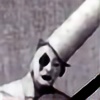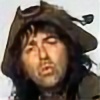HOME | DD
 RadoJavor — Santiago
RadoJavor — Santiago

Published: 2012-02-20 23:51:58 +0000 UTC; Views: 66269; Favourites: 1646; Downloads: 2192
Redirect to original
Description
The Biggest naval battle of Spanish-American war, called Battle of Santiago de Cuba. The whole war went very unfortunate for Spain and This was a end of the hundreds years old Spanish empire, it was year 1898.I think Its an interesting moment in history and I also like the design of the ships from this age. Especially this cruiser Infanta Maria Teresa. It was sunk with all other Spanish ships.
Done in photoshop with the help of wacom tablet. It was quiet slow picture done in about two weeks evenings. Spend ages on the old photos and plans for this ship.
Related content
Comments: 150

👍: 0 ⏩: 0

👍: 1 ⏩: 0

👍: 0 ⏩: 0

👍: 0 ⏩: 0






It was the most one-sided total naval victory of U.S history, in which an entire enemy fleet was basically annihilated and the U.S. only lost one casualty: one sailor was decapitated by a cannonball in the entire battle. The rest of the casualties were brave Spanish sailors under their good commander Pasqual de Cervera. And yet, most of the current and preceeding generation of Americans barely know of this victory. If we think at all of the three month war of 1898 (actually properly called the "Cuban-Spanish-American War" as Cuba was fighting Spain for independence already) it is because of the destruction of the U.S.S. Maine in Havana Harbor on Feb. 15, 1898, the battle of MANILLA Bay, in the Philippines on May 1, 1898, and the battles of Kettle Hill and San Juan Hill involving the fighting of the volunteer cavalry unit, the "Rough Riders" under Col. Leonard Wood and Lt. Col. Theodore Roosevelt in July 1898. The "Charge up San Juan Hill" made the politically prominent Roosevelt hot as a candidate for higher office, and he was governor of New York State in 1899, Vice President of the United States in 1901, and (due to the assassination of President William McKinley on Sept. 7, 1901, and his subsequent death on Sept. 14, 1901) President of the United States - a role he filled quite well. But one can see there is something lopsided about the 1898 affair. Unlike the American Revolution, the War of 1812, the Mexican War, the American Civil War, the wars against the various Native American tribes, the First World War, and the Second World War, the Cuban-Spanish-American War was (odd to think this way) too short. In fact, the diplomat and author John Hay nicknamed it, "the splendid little war". So it remains to us today - a brief victorious affair that seems (in retrospect) so brief it's comic. This forgets that soldiers and sailors on both sides died in that war, due to fighting, infected wounds, and even a scandal about tainted beef sold to the U.S. army that caused some soldiers to die.
The war is significant because it marked the emergence of the U.S. as a major power on the world stage - even as Spain's imperial age departed after four centuries. Only Japan matched this in the 1890s by her victory over China in 1894. In Spain proper it led to the stirrings of a reform movement affecting political thinking and writing - the "generation of 1898" came into being, and started trying to modernize their nation to meet the 20th Century.
Yet when we think of the war as a naval affair (the first war to test the modernized U.S. Navy) it is the loss of the "Maine" and the battle at Manila that interest us. We stretch it a little to consider the plight of one of our battleships, the U.S.S. Oregon, ordered to go to Cuban waters to add to our strength there. The "Oregon" set sail from her west coast port down to Cape Horn, and then up the Atlantic coasts of South and Central America, and did reach Cuba - about a month or so after the war ended! The voyage convinced many Americans that we had to shorten that route - and gave impetus to a trans-oceanic canal in Central America, possibly in Nicaragua or Panama.
The "Maine Incident' may have certainly been blown out of proportion due to the "Yellow Journalism" practiced by the "New Your World" of Joseph Pulitzer and "The New York Journal-American" of William Randolph Hearst. They were involved in a long standing circulation war, and grabbed any story for headlines as boosters for the sales of their papers. The destruction of the battleship is still a mystery after nearly 120 years, but both insisted that it was due to some act of devilry by the Spanish Government - most likely with a submarine mine. Recent studies insist it was an internal explosion - possibly from coal dust.
As for Manila Bay, it is not even in Cuba. Theodore Roosevelt was assistant Secretary of the Navy when War was declared in April 1898, and sent a telegraph message to Commodore George Dewey's Pacific Squadron (in Hong Kong at the time) to head for Manila to attack the fleet. This was done by Dewey (who uttered the memorable phrase to his chief officer, "You may fire when ready Gridley") and the battle ended in about half an hour - with little bloodshed actually. Because it was the first battle of the war it gained it's immortality, with few Americans realizing it was in the wrong part of the globe.
The reason for this attack was we had just absorbed the Hawaiian Islands in 1898, and Assistant Secretary of the Navy Roosevelt did not want the Philippines to fall into German or Japanese or Russian hands, as it was useful for the defense of Hawaii. It can be seen as a strategically wise move for 1898, but ironically there had been a local independence movement led by Emilio Aguinaldo at the time, and he had cooperated with Dewey's attack - figuring the U.S. would help him set up a Filipino government. When he found this was not happening, he led what turned out to be a very bloody four year war against the U.S. troops sent to the Philippines that only ended when he was captured. More U.S. troops died in the so-called "Filipino Insurrection" than in the Cuban-Spanish-American War,
When the war began, Spain's main fleet was under Admiral Cervera, and was stationed in European waters. It was ordered to the West Indies, to go to Cuba and protect Spanish land forces fighting the Cuban insurgents. It was also to try to keep the Americans from landing troops on the island. Cervera's fleet was a modern one, but it was not as well built (ship for ship) to the U.S. fleet. He was aware of this, and decided to be extremely careful in crossing the ocean - he wished only to get his ships to Cuba in tact. This veil of secrecy led to a kind of comedy - very familiar throughout the war, in which the U.S. (which had been building up it's navy since the 1880s - but especially since 1890) discovered that Cervera was in a great position to attack and shell, or even levy tribute from various major Eastern Coast ports, like Boston, New York, Philadelphia, Washington, D. C., Charleston, and Savanah. The only protection for these urban centers were antiquated forts and Civil War monitors.
The solution to this problem was the establishment of what became known as the "Flying Squadron" of the Navy's fastest ships to hunt down and sink the vessels of Cervera's fleet. Commanding it was newly promoted Rear Admiral Winfield Scott Schley. Schley had an interesting career including rescuing the survivors of the 1882 - 84 Greeley Polar Expedition, and commanding the "U.S.S. Baltimore" when it was involved in an incident in Chile where an anti-American mob killed two sailors on shore leave in 1891. The newly made Admiral cut a dashing figure, with his "imperial" beard, and he was popular with his men. He seemed a natural to capture or sink the Spanish fleet.
For three weeks or so Schley searched fruitlessly for Cervera and his ships. The hitherto avid war-seeking "Yellow Press" barons Pulitzer and Hearst actually began panicking now about the situation they unleashed. In the end headlines appeared prophesizing doom unless the Spaniards were found soon. There is a reference to this madness in the film, "Citizen Kane" when the banker Thatcher - in confronting his former ward Kane - asks him about the reality behind the headline "Galleons of Spain off the Jersey Coast". Orson Welle's "Kane" says, "I don't know how true it is - have you information that it is not true?" '
Of course it wasn't true. Admiral Cervera probably would have liked to be able to bombard one or two of the U.S. cities, but even with his fleet it would have been hard to do. Moreover, the idea of holding the cities for ransom was really quite impossible, as it required sticking around until the U.S. Navy showed up. Instead he did the sensible thing - he reached Cuban waters and he settled in to Santiago Bay.
The American ships were soon there, under Rear Admiral William Sampson. He was, from what I have read of him, a well respected sailor and a good strategist and tactician. But unlike Schley, he was not a friendly or endearing person. Sampson soon was joined by Schley's squad, and they blockaded the harbor to prevent Cervera getting out.
One has to keep something in mind for what happened on July 2, 1898, that occurred two months earlier. In the wake of the victory at Manila Bay, the Navy promoted George Dewey from Commodore to Vice Admiral (quite a jump actually) and then promoted other officers to other higher ranks. Two promoted were Schley and Sampson. Here though an interesting point of internal promotion rules came out. Depending on your position of the promotion list, two people may have the same rank, but the one higher up on the list technically outranked the other. Sampson was three or four names above Schley in the promotions. This was to blow up in both men's faces when the battle was over.
Attempts to further block up the Santiago Harbor entrance to prevent Cervera from getting out were tried, most notably the sinking of a collier, the U.S.S. Merrimack" in the mouth of the harbor by a picked crew under naval Lieutenant Richmond Hobson. It was a good plan, but Cervera's ships saw what Hobson tried to do and started firing. His men abandoned the "Merrimack" with Hobson making a last attempt at scuttling the craft - and succeeding but not quite it had to be sunk. He and his party were captured, and after the war Hobson, a good looking, young man, would get the Congressional Medal of Honor for his work that night - and would become a U.S. Congressman (supposedly the most kissed political candidate of the day). Hobson by the way did something which (to me) outweighs his bravery or public service in Congress - one day he noticed the shabby legal talent frequently used by African Americans in the law courts in Washington, D.C.; from then on Hobson worked part time for free as a lawyer for African-Americans.
One can see that Cervera had helped in the defense of Santiago, now the chief city for the Spanish troops on the island. But he got word from Spain that he was needed to return to home waters, as it was feared the coast of Spain might be attacked by the U.S. So, on July 2, 1898 he made ready to break out of the harbor. Interestingly that day Rear Admiral Sampson was called to a conference with the Cuban and U.S. Army leaders on land outside Santiago. So he passed his command over to Read Admiral Schley. Sampson in his time in command made up a ship displacement plan to position the U.S. Navy battleships in such a way that they could still prevent Cervera breaking out. This plan had been discussed with Schley.
Sampson left for his conference. Schley kept an eye on the harbor, but was suddenly caught short when Cervera's ships started steaming up. They rapidly made for the mouth of the harbor, and dashed towards the open Caribbean waters. Schley's men began to fire into Spanish ships, including the "Reina" and one by one the ships began getting badly damaged, and began either blowing up or sinking. Within an hour of sea chasing along the coast all of Cervera's ships were lost (the last a fast torpedo craft, the "Furor") and Spanish sailors were in the waters drowning or dying of their wounds - one of the U.S. naval officers made a statement that in 1898 and for a few years after was as well known as Dewey's order at Manila: "Don't cheer boys, the poor devils are dying!"
But while the battle raged, Schley did not notice a small boat trying to catch up with his flagship, the U.S.S. Brooklyn. Soon a small, spaded bearded figure was on deck BEFORE THE BATTLE ENDED. It was Sampson. He had seen the ships of Cervera's fleet firing up and had decided to return to his flagship to take command. Of course, the battle was already ending in a total U.S. victory.
Among the Spanish survivors was Pasquale de Cervera. A bit waterlogged he was brought to the then commander of the U.S. ships (Schley) and surrendered). But now Sampson was there too, and slowly turning beet red with anger - over the issue of the credit for the victory.
What happened in the immediate aftermath and some months to come was like a Gilbert and Sullivan operetta. Both Sampson and Schley apparently did have words that day, with Schley pointing out that he had fought the battle not Sampson, and Sampson arguing that there might not have been a battle if Schley had place his ships better in the position that Sampson outlined to him - and reminding his junior officer (remember that promotion list positions) that the battle was still going on when he arrived back on board.
In the euphoria of the fall of Santiago shortly after the naval battle, and the end of the war in Cuba by September (with the U.S. acquiring the Philippines, Guam, and Puerto Rico as a result) the contretemps between Sampson and Schley did not immediately attract attention. But as the war drifted into the background, and Roosevelt and Hobson went onto their successful political careers, and Dewey was lauded for his smart victory at Manila, the conflict between Sampson and Schley just grew louder and louder, with adherents in the Navy on both sides. It did not help matters that Admiral Cervera was treated as a great naval hero by the U.S. public for his feat of successfully avoiding discovery by the "Flying Squad" and reaching safe anchorage at Santiago, and his similarly brave attempt to get his fleet out to sea. He lost the battle, but he won American admiration, and was wined and dined in the states until he returned to Spain.
It was not until 1902 that the new U.S. President, Theodore Roosevelt, gad a formal inquiry into the battle of Santiago Bay held. A three man panel was to hear the evidence and determine who deserved credit for the victory. One of the three admirals involved was Vice Admiral Dewey. They heard the facts and arguments, and came to the conclusion that since Cervera's ships did not make as clean a break out as he hoped, it had to be because of the plan set up by William Sapmson, and while Winfield Schley did fight most of the battle Sampson showing up before the end meant the fleet's actual commander was present in the conflict. So the Board awarded the victory to Sampson. That is two did. There was one rejection of this opinion, and unfortunately it was George Dewey. Having fought a major action at Manila, he considered who was actually present in the pursuit of Cervera's fleet. He felt that Schley was the one responsible for the victory.
So the result was in, and really settled nothing. Schley pointed out that the two admirals who supported Sampson were friends of Sampson, and thus biased against Schley. Sampson was upset that the greatest naval hero since the days of Admiral Farragut and Admiral Porter in the Civil War sided with Schley. Sampson health was weak, and he died later in 1902. Schley carried on until 1911, but never got over the fact he had won the most one sided victory in U.S. Naval history, but was denied credit for it. He became an extreme alcoholic before his death.
Looking at the portrait of the flagship of the Spanish fleet it appears so proud as it fires in defiance to the attacking U.S. ship. Cervera and his men and their ships did live up to a long history of maritime greatness. The picture captures it when it was approaching it's end quite effectively.
👍: 2 ⏩: 2

Admiral Cervera himself was captured by Americans after the battle.
Hobson had a career as a champion of prohibitionisism after his military glory.
👍: 0 ⏩: 0

Your usual thorough write-up!
👍: 1 ⏩: 1

Thank you. Glad you liked it.
👍: 0 ⏩: 0

👍: 0 ⏩: 0

A very nice picture.
I think the sea water in the bottom left corner is higher than in the top corner. It could be something with perspective. To be honest I had to look hard to notice it, and it does not really affect the picture that much as it is dark and I feel like attention does not stay there long enough for this to be noticed. Hope this helps.
👍: 1 ⏩: 1

probably you right. Its difficult perspective.
👍: 0 ⏩: 1

Yeah but I think it will come with practice. Just make sure not to give up and keep on going. The picture itself is great, again I had to look for it (it is in the dark area so its less likely to be noticed anyway). Everything else is gorgeous though!
👍: 0 ⏩: 0

it's good to know the "splendid little war" - as John Hay called it - is still remembered.
👍: 0 ⏩: 0

Ships of that era were fascinating in their design, Steam had taken over from sail but the battle tactics were unchanged. Ships still closed into each other and fired broadsides even though the guns could nor swivel around on turrets and their rang was now in miles instead of yards.
👍: 0 ⏩: 0

BRAVO ZULU On an excellent job....you really capture the feeing of been at sea..
👍: 0 ⏩: 0

Absolutely flawless!!! I must know what software you used to pull this off. Please share your methods
👍: 0 ⏩: 0

I will try to give a decent critique here since I am familiar with military photos since I was a 96D2T in the Army.
First it is very dramatic obviously out gunned against what looks to be a larger and better armed opponent. I would think that the wheel house would be better armored since that is where the captain would be during an engagement, but I have to remember this was a portrait of a ship that sank pre-20th century.
The artwork on the bow is good, I do remember ships having that. Also the primitive style of range finding on the fore turret is a nice touch which few would see.
All in all this is a very good work in my opinion.
👍: 0 ⏩: 1

Actually, the captain and helmsman would be in the armored conning tower directly beneath the wooden wheelhouse.
👍: 0 ⏩: 0

I like that era of ships, too. They re-used the ancient ram hull concept after the "Re d'Italia" was rammed and sunk some decades earlier that way. This era got some of the most amazing ship concepts.
Technically the colors and the contrast inside the image are kinda low. It's still somehow not looking real enough. Still, it's a master piece, and it cought me for a long time and made myself dreaming.
👍: 0 ⏩: 0

Very very nicely done. The ships are authentic for the period and the navies.
👍: 0 ⏩: 0

Very impressive!
The battleship in the background looks like the USS Oregon, one of my favorite pre-dreadnought ship designs.
👍: 0 ⏩: 0

Simply wonderfull. It's very hard to find any picture of naval combat from that era, especially of this quality.
👍: 0 ⏩: 0

It's nice to see Spain's warships of the day get some attention.
👍: 0 ⏩: 0

Ironclads are always a lovely looking class of ships.
👍: 0 ⏩: 0

Yeah the attack of the USA against the only naval power weaker than it's own at the time I believe. Yep. And nice drawing. Always love your battle scenes.
👍: 0 ⏩: 1

Back in the 1880s the US Navy was down between China and Chile in terms of size, due to the neglect of Congress to fund new ships. It did not get its first battleships until the mid-1890s and even with Roosevelt's Great White Fleet, was still a bush-league operation compared with European navies. During WWI, it was attached to the British Royal Navy and didn't reach its present eminence until WWII.
👍: 0 ⏩: 0

I generally love your artwork. But this one is outstanding, especially the beautiful contrast between the shadows on the side of the ship and the nice lighting effects of the sun on the deck and the guns. Amazing.
👍: 0 ⏩: 0

I'm wondering if you're planning to paint USS Olympia in her famous victory just outside my home in Manila Bay? Its also a ship in the same war as this one.
Excellent work as expected of you, sir!
👍: 0 ⏩: 0

It has always been a toss up between Infanta Maria Teresa and USS Brooklyn as to which is a prettier ship.
👍: 0 ⏩: 0

It´s a beautiful artwork, very well done, I´m impressed!!
👍: 0 ⏩: 0

I don't usually say this about ships/cars or anything but that's one sexy ship. I love the little bit's of rust near the front where the chains attach to the ship and the "royal" detail on it.
if you got my last comment about a book cover the novel I'm currently working on is about pirates so this sort of thing would be very awesome.
👍: 0 ⏩: 0

You never fail to impress me with your amazing artwork. Great job!
👍: 0 ⏩: 0

no to som uz robil ako decko na zakladnej. mozno to este najdem
👍: 0 ⏩: 1

tento typ skusenosti s aurorou maju asi vsetci v CSSR
👍: 0 ⏩: 1

ja by som ju aj nakreslil ale aurora ma silny ideologicky podton. a ja fakt nie som fanuisik bolsevickej revolucie.
👍: 0 ⏩: 1

tak to ani ja nie... ale aurora si vacsinu skutocnej bojovej slavy odzila este za cara.
👍: 0 ⏩: 0
| Next =>


































